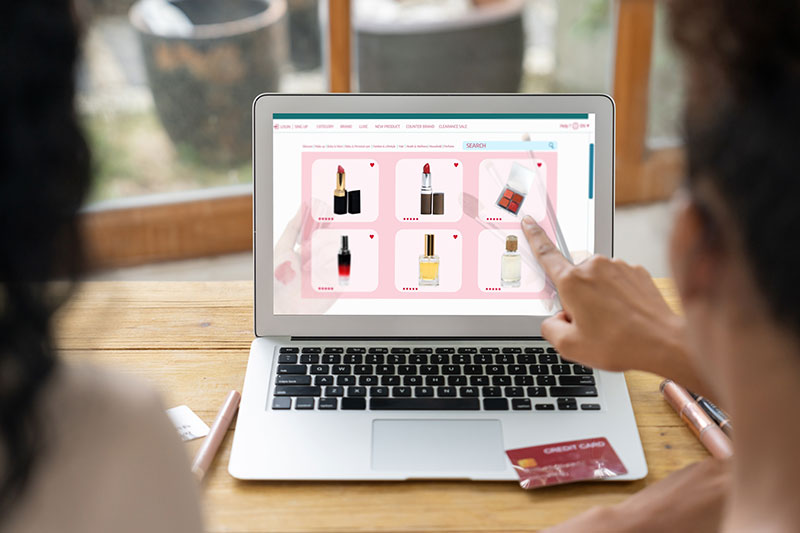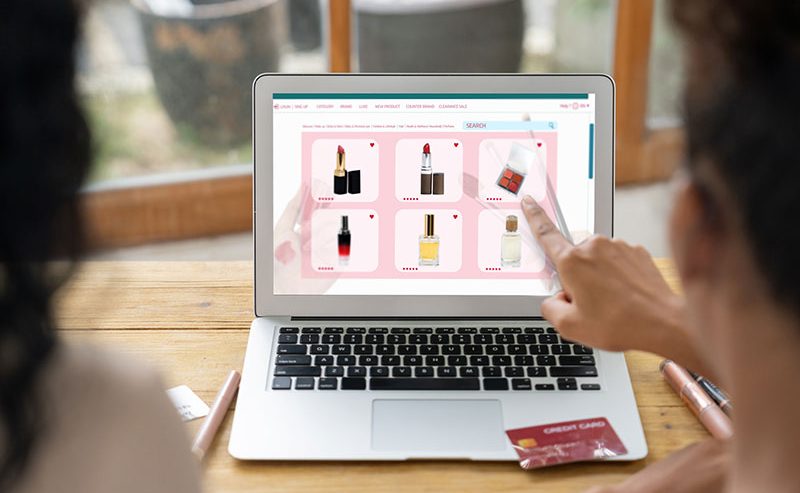6 strategies to personalize ecommerce and sell more
How to personalize ecommerce is a much discussed topic nowadays, due to the high expectations of consumers and the need to stand out from the competition.
In this article, we will present six practical strategies to customize your online store and boost your sales.

Personalize ecommerce: 6 strategies to boost your business
Personalizing ecommerce means offering closer service to your client, almost like VIP treatment, which takes into account the preferences and individual behavior of each customer.
According to the Customer Engagement Report 2024, from Twilio, personalization is a determining factor in brand loyalty.
The study reveals that 71% of respondents would stop buying from brands that do not offer personalized experiences, based on your preferences, interests and expectations.
Check out six ways to personalize ecommerce, transform the customer experience and increase sales.
– How your delivery strategy can increase your sales
1. Encourage your customers to create accounts
The first step to personalize ecommerce is to collect data from your customers.
Encourage users to create accounts when making purchases or signing up for your newsletter.
With this data, you can identify patterns like gender, age range, and preferences.
This allows you to create targeted campaigns for specific audiences.
Tracking individual purchasing behavior is the next step. Artificial intelligence tools are great allies in this process.
To monitor browsing habits and purchasing history, you can suggest products and information that are really of interest to the consumer — which considerably increases the chances of conversion.
– Main types of AI in eCommerce
2. Segment your email list
Your email list is one of your most valuable resources when it comes to personalization.
Use geographic, demographic, psychographic (such as lifestyle and interests) and behavioral data (such as purchase and browsing history) to segment contacts.
This way, you can send seasonal offers more intelligently. If you are promoting winter clothing, target customers who live in cold areas, for example.
Other effective practices include:
- Use the customer name in the subject of the email.
- Send personalized offers based on previous purchases.
- Create birthday emails with exclusive discounts.
By knowing your customers well, you increase the chances of engagement and sales.
3. Customize your website home page
The homepage of your website is the gateway to your online store. So, make sure you give customers a warm, personalized welcome based on their purchases or browsing history.
With the use of cookies, it is possible to track browsing behavior and present content or products more aligned with the user’s interests.
Practical examples:
- If a visitor reads an article on “how to start an ecommerce business”, you can invite them to download an ebook on order management systems.
- If a user has browsed through products on sale, show them new items with similar discounts on their next visit.
This type of customization generates a direct impact on engagement and conversion rate.
4. Provide personalized recommendations and offers
To be successful in ecommerce personalization, you need to know what your customers think — and asking is a great way to find out.
Utilize quick research, interactive quizzes or pop-ups to better understand the user’s style, size or budget.
With this data in hand, you can:
- Display specific product recommendations.
- Send targeted offers.
- Use exit pop-ups with personalized discounts, encouraging the customer to complete the purchase.
This type of active approach contributes to both immediate sales and building longer-lasting relationships.
5. Create actions to win back inactive customers
Personalization is also powerful in customer reconquest who haven’t bought from your store for a long time.
Utilize retargeting campaigns based on purchase history and offer special incentives, such as discount coupons or gifts.
Re-engaging past customers can be cheaper and more effective than attracting new ones — and with personalization, this task becomes even more strategic.
– Strategies for using discount coupons in e-commerce
6. Use chatbots with personalized messages
Most websites still use generic messages in their chats.
Personalizing this channel based on the source URL, browsing behavior, or user data can make all the difference.
Chatbots and live chats offer:
- Real-time responses.
- Personalized recommendations.
- Agile and proactive support.
Research shows that for younger generations, personalization is even more important.
In a recent survey by Deloitte, 40% of consumers said they purchased more from brands that personalized engagement, and 37% said they recommended those brands to family and friends.
And a whopping 88% of customers said the experience a company provides is as important as its product or services — up from 80% in 2020.
Using chatbots or a live chat channel offers a fast and personalized customer interaction and it is often the difference that convinces you to stay on your website.
– 6 Ways to Use Chatbots to Increase Sales
Personalize ecommerce is no longer optional — it’s essential

With consumers becoming increasingly demanding, personalizing the shopping experience is no longer a differentiator but a competitive need.
According to Twilio’s report:
- 64% of consumers would abandon a brand due to lack of personalization.
- 31% have already purchased from another company for this very reason.
Although there may be thousands of variables to personalize ecommerce, it is important to know which ones make sense for your business and put them into practice with a focus on the customer journey — from the first access to the final delivery of the product.
Make delivery part of your personalization strategy
The shopping experience doesn’t end with clicking the “complete order” button.
Delivering with agility, practicality and real-time tracking is essential to ensure customer satisfaction.
Delivery365 app works with a base of hundreds of registered delivery people to ensure the fast courier service of products.
With a focus on e-commerce, Delivery365 counts with tracking technology, user-friendly interface for you to create your online store in just a few steps, customization options, online payment and much more.
– Best payment methods for your online store
True revolution in the way you make deliveries, with our app you transform delivery into another point of loyalty for your customer.


